This post highlights the approach and finding of a new research article published by Disease Models and Mechanisms (DMM). This feature is written by Lacey Kennedy as apart of a seminar at The University of Alabama (taught by DMM Editorial Board member, Prof. Guy Caldwell) on current topics related to use of animal and cellular model systems in studies of human disease.
Lacey Kennedy
Department of Biological Sciences, The University of Alabama, Tuscaloosa, AL, USA
Commentary on:
ALS lymphoblastoid cell lines as a model to understand disease mechanisms
Pansarasa O.1, Bordoni M.1,2, Dufruca L.1, Diamanti L.2,3, Sproviero D.1, Trotti R. 4, Bernuzzi S.5, La Salvia S.1, Gagliardi S.1, Ceroni M.2,3, Cereda C.1
- Genomic and post-Genomic Center, “C. Mondino” National Neurological Institute, Pavia, Italy.
- Department of Brain and Behavioral Sciences, University of Pavia, Pavia, Italy.
- General Neurology Unit, “C. Mondino” National Neurological Institute, Pavia, Italy.
- Department of Neurodiagnostics and Services, Laboratory of Clinicals and Chemicals Analysis (SMeL), , “C. Mondino” National Neurological Institute, Pavia, Italy.
- Department of “Medicina Diagnostica e dei Servizi”, IRCCS Policlinico San Matteo Foundation, Pavia, Italy.
Pansarasa, O., Bordoni, M., Dufruca, L., Diamanti, L., Sproviero, D., Trotti, R., Bernuzzi, S., La Salvia S., Gagliardi, S., Cereda, C.(2018). ALS lymphoblastoid cell lines as a considerable model to understand disease mechanisms. Disease Models & Mechanisms, (January), dmm.031625. https://doi.org/10.1242/dmm.031625
Amyotrophic lateral sclerosis (ALS) is a neurodegenerative disorder characterized by the degeneration of both upper and lower motor neurons (Hardiman et al. 2017). Although a rare disease, affecting approximately 15,000 Americans between the ages of 55-75 years old, it is one of the many ageing-related diseases growing in prevalence as global lifespan increases (https://www.ninds.nih.gov/Disorders/Patient-Caregiver-Education/Fact-Sheets/Amyotrophic-Lateral-Sclerosis-ALS-Fact-Sheet). ALS is a multi-factorial disease that causes muscle weakness, spasticity, cognitive impairment, and ultimately ends in a premature death within five years after the diagnosis (http://www.alsa.com/about-als/facts-you-should-know.html). While many causes are still unknown, there are three main genes thought to play a role in the pathogenesis of ALS: Copper zinc superoxide dismutase (SOD1), TAR DNA Binding Protein 43 (TDP-43), and RNA binding protein FUS. SOD1 is a highly conserved enzyme that scavenges for superoxide radicals, but in its mutated form is very unstable and has been found to unfold even at physiological pH and temperature (Lee, S., & Kim, H. 2015). This mutation can lead to an aggressive form of the disease; in fact, ALS can be characterized by an increase of SOD1 expression in peripheral blood mononuclear cells, as well as neurons (Cereda, C. et al., 2013). Furthermore, TDP-43 and FUS, which are both involved with RNA regulation and transcription, appear to be functionally related in ALS pathology (Lee, S., & Kim, H. 2015). FUS mutations appear to play a role in young-onset of the disease and are characterized by predominate degeneration of the lower motor neurons, although a direct mechanism is not well understood (Blokhuis, A. M, etal. 2013).
While serving different functions, when any of these three genes are mutated in ALS patients, mitochondrial function becomes abnormal, which affects neurons, as well as surrounding tissues. Due to the increasing realization that the molecular mechanisms of ALS are not isolated to the nervous system, Pansarasa et al.identified the need for an alternative model for ALS research in a recent Disease Models and Mechanismsarticle. In this study, they sought to identify biologically relevant molecular hallmarks of ALS in lymphoblastic cell lines (LCLs) isolated directly from human ALS patients, with the hope of establishing a new, more effective model for ALS research (Pansarasa, O. et al., 2018). To do this, they looked at the two known pathogenic mechanisms of ALS: protein aggregate accumulation and mitochondrial dysfunction.
Evidence has indicated that mislocalization of SOD1, TDP-43, and FUS could explain many irregularities in ALS signaling(Ido, A., et al,2011). Using western blot,Pansarasa et al. show that SOD1 expression levels decrease in the nucleus of LCLs from patients with sporadic ALS (sALS), SOD1, and TDP-43 mutations as compared to LCLs from healthy patients. They did not see such a change in cytoplasmic SOD1 levels, suggesting that there is a failure to relocate from the cytoplasm to the nucleus. Supporting this idea through immunostaining, the authors found an abnormal presence of protein aggregates in the cytoplasm of SOD1 and TDP-43 mutated LCLs, which further supports the idea of protein mislocalization in ALS patients (Pansarasa, O. et al., 2018). SOD1 and TDP-43 aggregate in certain forms of ALS (Blokhuis, A. M., et al 2013). Therefore, demonstrating the presence of protein aggregates marks an important first step in the establishment of LCLs as a model for ALS as these aggregates are a known hallmark of the disease.
Next, the authors investigated changes in mitochondrial morphology and function. Through TEM microscopy, they confirmed that patients with SOD1, TDP-43, and FUS mutations harbored morphological signs of degeneration in the mitochondria, such as a smaller, rounder size and increased number of vacuoles. After examining the mitochondria, Pansarasa et al. looked at the protein expression levels of proteins regulating the fission and fusion processes. Notably, in patients with a TDP-43 mutation there was a significant increase in expression levels of proteins regulating the fusion process (Pansarasa O. et al, 2018). This increased fusion corresponds to the same increase found in the neurons of ALS patients with TDP-43 mutations.
Finally, the authors investigated the functional changes in mitochondria through the examination of respiration and glycolytic flux. Using the Seahorse Bioanalyzer, Pansarasa et al found that mitochondrial oxygen consumption significantly increased in sALS patients as compared to the controls. Additionally, they found that Spare Respiratory Capacity, the ability of mitochondria to produce energy in conditions of high energy demand, was greatly diminished. The results also suggested a down-regulation of glycolytic flux in SOD1 mutated patients. These changes in mitochondrial activity correspond to a failure of ALS mitochondria to adequately respond to increased energy demands (Pansarasa et al. 2018).
With this, the authors have established a variety of physiological hallmarks of cells affected by ALS. This is of the utmost importance in ALS research as the field changes from the perspective that ALS is just a neurological disease to the view that it is a multifaceted disorder that impacts the entire body. It should be noted, however, that there are some disadvantages to LCLs as a model. Due to the nature of in vitro culturing, LCLs lack environmental factors that affect behavior. For example, Pansarasa et al demonstrated that while some LCL mutations facilitated protein aggregation, there was a lack of aggregation in LCLs from sALS patients, which the authors theorized could be due to a lack of elements regulating nuclear import and export pathways. In addition, there was little significant change in protein aggregation of LCLs with mutated FUS, suggesting that this is not an effective representation of the FUS mutation in ALS patients due to the role of this protein in lymphoblastic cells (Pansarasa O. et al. 2018). Despite this fact, using human LCLs offers a solution to many of the limitations presented with current ALS models.
Before this paper, Peripheral Blood Mononuclear Cells (PBCMs) was the new model growing in popularity for ALS research. While this method shows promise for a potential diagnostic tool, there are major disadvantages to their use in basic research (Nardo, G., et al2011). First, they cannot be maintained long-term because they will lack important environmental stimuli present in the body. Second, although they are part of the immune system, they are not representative of the immune system cells outside of the blood niche. What occurs in PBMCs does not necessarily recapitulate the response of the immune cells from other parts of the body, for example the central nervous system. Finally, researchers are not able to generalize the implications of any one result due to the fact that the immune system health of the donors impacts the response of these cells, resulting in very limited inter-experimental reproducibility (Kleiveland C.R., et al 2015).
The use of LCLs addresses many of these problems, because they can be immortalized and grown in culture. This prospective model represents the potential of a non-nervous system method to study the molecular mechanisms of ALS. Pansarasa et al. have already successfully identified morphological indicators of ALS and have shown that, with the establishment of LCLs as a model, we might be able to one day understand the causes and biological effects of ALS and find ways to do more for patients than simply slow down its progression.
References
Blokhuis, A. M., Groen, E. J. N., Koppers, M., Van Den Berg, L. H., & Pasterkamp, R. J.(2013). Protein aggregation in amyotrophic lateral sclerosis. Acta Neuropathologica, 125(6), 777–794. https://doi.org/10.1007/s00401-013-1125-6
Cereda, C., Leoni, E., Milani, P., Pansarasa, O., Mazzini, G., Guareschi, S., Alivisi, E., Ghiroldi, A., Diamanti, L., Bernuzzi, S., Ceroni, Mauro., Cova, E.(2013). Altered Intracellular Localization of SOD1 in Leukocytes from Patients with Sporadic Amyotrophic Lateral Sclerosis. PLoS ONE, 8(10).https://doi.org/10.1371/journal.pone.0075916
Hardiman, O., Al-chalabi, A., Chio, A., Corr, E. M., Robberecht, W., Shaw, P. J., & Simmons, Z.(n.d.). Amyotrophic lateral sclerosis. https://doi.org/10.1038/nrdp.2017.71
Ido, A., Fukuyama, H. and Urushitani, M.(2011). Protein misdirection inside and outside motor neurons in Amyotrophic Lateral Sclerosis (ALS): a possible clue for therapeutic strategies. Int J Mol Sci. 12(10), 6980- 7003.
Ju Gao1, Luwen Wang1, Mikayla L. Huntley1, G. P. and X. W.(2018). Pathomechanisms of TDP-43 in neurodegeneration Accepted. Journal of Neurochemistry. https://doi.org/10.1111/jnc.14327
Kleiveland C.R.(2015) Peripheral Blood Mononuclear Cells. In: Verhoeckx K. et al. (eds) The Impact of Food Bioactives on Health. Springer International Publishing, https://doi.org/1007/978-3-319-16104-4
Lee, S., & Kim, H. (2015). Prion-like Mechanism in Amyotrophic Lateral Sclerosis: Are Protein Aggregates the Key. Exp Neurobiol., 24(1), 1–7.
Mackenzie, I. R. A., Bigio, E. H., Ince, P. G., Geser, F., Neumann, M., Cairns, N. J., Kwong, L. K., Forman, M. S., Ravits, J., Steward, H., et al (2007). Pathological TDP-43 Distinguishes Sporadic Amyotrophic Lateral Sclerosis from Amyotrophic Lateral Sclerosis with SOD1 Mutations. 4, 427–434. https://doi.org/10.1002/ana.21147
Nardo, G., Pozzi, S., Pignataro, M., Lauranzano, E., Spano, G., Garbelli, S., Mantovani, S., Marinou, K., Papetti, L., Monteforte, M., Torri, V., Paris, L., Bazzoni, G., Lunetta, C., Corbo, M., Mora, G., Bendotti, C. and Bonetto, V. (2011). Amyotrophic lateral sclerosis multiprotein biomarkers in peripheral blood mononuclear cells. PLoS One.6(10),e25545.
Pansarasa, O., Bordoni, M., Dufruca, L., Diamanti, L., Sproviero, D., Trotti, R., Bernuzzi, S., La Salvia S., Gagliardi, S., Cereda, C.(2018). ALS lymphoblastoid cell lines as a considerable model to understand disease mechanisms. Disease Models & Mechanisms, (January), dmm.031625. https://doi.org/10.1242/dmm.031625
 (3 votes)
(3 votes)
 Loading...
Loading...


 (No Ratings Yet)
(No Ratings Yet)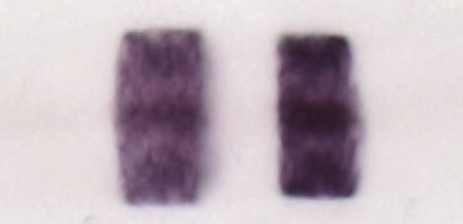
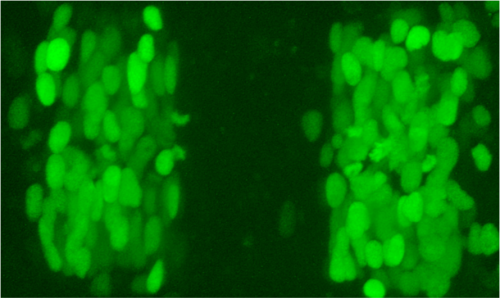
 (2 votes)
(2 votes)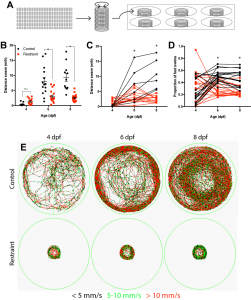

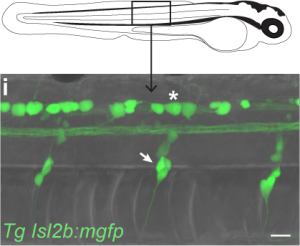
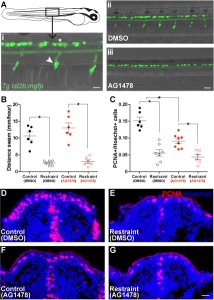
 (3 votes)
(3 votes)
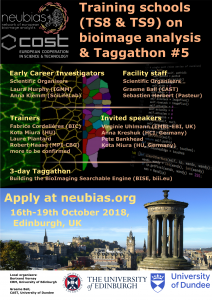 The focus of training will be on construction and automation of BioImage Analysis workflows, using as examples more than one toolbox and different exercises. The schools will be held in Edinburgh 16-19th of October 2018, hosted by the MRC Center for Regenerative Medicine/Imaging facility and co-organized by the University of Edinburgh and University of Dundee.
The focus of training will be on construction and automation of BioImage Analysis workflows, using as examples more than one toolbox and different exercises. The schools will be held in Edinburgh 16-19th of October 2018, hosted by the MRC Center for Regenerative Medicine/Imaging facility and co-organized by the University of Edinburgh and University of Dundee.